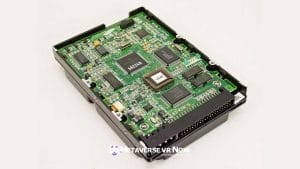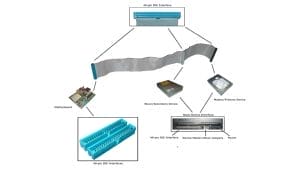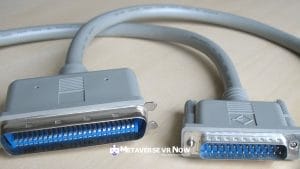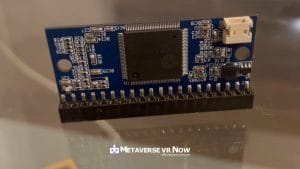In the realm of computer hardware, where innovation is the key to unlocking endless possibilities, Integrated Drive Electronics (IDE) stands as a silent yet crucial player. Imagine a world where your computer’s storage seamlessly interacts with its processing unit, providing a harmonious symphony of efficiency and speed. This is precisely what IDE technology offers: a seamless integration of storage devices like hard drives and optical drives directly into the motherboard, eliminating unnecessary clutter and enhancing data transfer speeds. As we delve deeper into this Ultimate Guide to Integrated Drive Electronics, prepare to be captivated by the intricate dance between hardware components that power our digital lives.
What is Integrated Drive Electronics? (IDE Definition)
Integrated Drive Electronics (IDE) revolutionized the world of personal computing by simplifying the way hard drives are connected to a computer. In essence, IDE refers to the method of integrating both the disk controller and drive connections into a single interface, streamlining data transfer processes. This innovation paved the way for faster data access speeds and increased storage capacities in computers across the board.
One key aspect that sets IDE apart is its use of a 40-pin connector, which allows multiple drives to be connected to a single interface, enabling users to easily expand their storage options without requiring complex configurations. Additionally, IDE’s standardized design made it universally compatible with various hardware engineering setups and operating systems, making it an integral part of countless computer systems for many years. As technology continues to evolve, IDE’s legacy still persists as a testament to its impact on modern computing infrastructure, laying down foundational principles that continue to influence how data storage devices are integrated into our digital lives today.

Evolution of IDE Technology
The evolution of IDE technology has been nothing short of revolutionary. Since its humble beginnings in the 1980s as a standard interface for connecting hard drives to personal computers, IDE has undergone significant advancements over the years. The transition from parallel ATA (PATA) to serial ATA (SATA) marked a major milestone, allowing for faster data transfer rates and improved performance.
As technology continues to progress, we have seen the emergence of solid-state drives (SSDs) that have redefined storage capabilities. SSDs offer higher speed, reliability, and efficiency compared to traditional hard disk drives (HDDs), making them an ideal choice for modern computing needs. Additionally, enhancements such as NVMe support and M.2 form factors have further pushed the boundaries of IDE technology, enabling users to experience unparalleled levels of performance and versatility.
Features and Benefits of IDE Drives
The beauty of IDE drives lies in their simplicity and reliability. These drives offer seamless integration with various devices, making them a popular choice for both personal and professional use. With their compact size and efficient performance, IDE drives provide a cost-effective storage solution that is ideal for those seeking a dependable option without compromising on quality.
One of the key benefits of IDE drives is their robust compatibility with older systems, offering backward compatibility that ensures these drives can still be utilized in aging hardware setups. Additionally, IDE drives are known for their ease of installation and setup, making them user-friendly even for those with limited technical knowledge. This accessibility, coupled with their high-performance capabilities, makes IDE drives a solid choice for individuals looking for efficient storage solutions that deliver both reliability and speed.
IDE Components: Cables, connectors, and controllers
When delving into the intriguing realm of IDE components, one cannot overlook the fundamental role played by cables, connectors, and controllers in this fascinating domain. Cables serve as the literal lifelines, transmitting data between different hardware components with precision and efficiency. Connectors are the unsung heroes, facilitating seamless connections and ensuring that information flows smoothly within the system. Meanwhile, controllers act as the intelligent conductors of this symphony, orchestrating data transfer operations with unparalleled accuracy and speed.
In a world where speed and reliability are paramount, each element of an IDE setup must work in perfect harmony to unleash its full potential. The intricate dance between cables, connectors, and controllers determines not only the performance but also the stability of an integrated drive electronics system. As technology advances at breakneck speed, these components continue to evolve to meet the ever-increasing demands of modern computing. By understanding their interconnected roles and harnessing their capabilities effectively, enthusiasts can unlock new possibilities in storage technology that were once deemed unimaginable.

Installing IDE Drives: Step-by-step guide
Installing IDE drives may seem daunting at first, but with the right guidance, it can be a straightforward process. Begin by setting the jumper settings on the drive to determine its master or slave status. Once that’s done, carefully insert the IDE cable into both the drive and motherboard connectors, ensuring a secure connection. Remember to also connect the power supply cable to provide the necessary power to the drive before closing up your computer’s case.
Next, boot up your computer and enter the BIOS settings to verify that the IDE drive is detected. If not, double-check your connections and settings. You may need to format and partition your new IDE drive using tools like Disk Management in Windows or Disk Utility in macOS. Once completed, your IDE drive should be ready for use as additional storage or as a primary device for installing an operating system. With careful attention to detail and these step-by-step instructions, you’ll have your IDE drives installed and functioning smoothly in no time.
IDE vs SATA: Key differences and benefits
One of the key differences between IDE (Integrated Drive Electronics) and SATA (Serial Advanced Technology Attachment) lies in their data transfer speeds. While IDE is limited to a maximum speed of 133 MB/s, SATA offers much faster speeds, with the latest iterations reaching up to 600 MB/s. This significant speed advantage can greatly benefit users who require faster data transfer rates for tasks such as video editing or large file transfers.
Another crucial distinction is in terms of cable connections. IDE drives typically use wide ribbon cables that can obstruct airflow and create clutter within a computer case. On the other hand, SATA drives utilize thinner and more flexible cables, allowing for better cable management and improved ventilation in the system. This streamlined design not only enhances aesthetics but also contributes to overall system performance by maintaining lower operating temperatures for components.

Troubleshooting IDE Issues: Common problems and solutions
One common issue users face with their IDE is slow performance, which can be attributed to excessive plugins or extensions running in the background. To resolve this, consider disabling unnecessary plugins and clearing the cache regularly to optimize your IDE’s speed.
Another frequent problem encountered by developers is the erratic behavior of the IDE, such as sudden crashes or freezing. This could be caused by incompatible software updates or corrupt configuration files. When facing such issues, try updating your IDE to the latest version or resetting its default settings.
Furthermore, a frustrating dilemma for many users is code formatting inconsistencies within the IDE. This can be resolved by configuring the built-in formatting options according to your coding preferences and utilizing linting tools to correct styling errors automatically in real-time. By addressing these common problems effectively, you can enhance your overall productivity and streamline your development process within your chosen Integrated Drive Electronics platform.

Upgrading IDE to SSD: Benefits and considerations
Upgrading your IDE to an SSD can revolutionize your development experience. The speed and efficiency of an SSD can significantly reduce compile times, loading speeds, and overall performance. Imagine launching your Integrated Development Environment in seconds rather than minutes, allowing you to focus on coding without unnecessary delays.
When considering the switch to an SSD, it’s crucial to evaluate compatibility with your existing hardware and software setup. Ensure that your IDE and other tools are optimized for SSD usage to fully leverage its benefits. Additionally, take into account the storage capacity you need based on your project requirements and data usage patterns. Investing in a high-quality SSD with sufficient storage space can enhance not only your IDE performance but also overall system responsiveness.

Future of IDE Technology
The future of IDE technology is poised to revolutionize the way we approach software development. With advancements in machine learning and AI, IDEs are becoming increasingly intelligent, offering predictive coding suggestions and automating repetitive tasks. This shift towards more seamless and efficient development processes will empower developers to focus on creativity and problem-solving rather than mundane coding tasks.
Moreover, the integration of cloud-based services within IDEs is set to streamline collaboration among distributed teams. Real-time co-editing, version control, and project management tools within the IDE environment will enhance productivity and foster smoother teamwork. As our digital landscape continues to evolve rapidly, IDE technology will play a crucial role in shaping how we build innovative solutions for tomorrow’s challenges.
Bottom Line: Future of Integrated Drive Electronics
As we move toward the future of Integrated Drive Electronics (IDE), it is clear that advancements in technology will continue to shape its functionality. With the increasing demand for high-speed data storage and transfer, IDE is likely to evolve to meet these requirements. The integration of new interfaces and protocols will enhance the efficiency and performance of IDE drives, making them even more essential in various computing applications.
Moreover, the future of IDE also lies in its compatibility with emerging technologies such as artificial intelligence and machine learning. As these fields drive innovation and revolutionize industry standards, IDE has the potential to adapt and integrate seamlessly with these advancements. This convergence will open up new possibilities for IDE drives in areas like autonomous vehicles, smart infrastructure, and IoT devices. In essence, we are poised to witness a dynamic shift in how IDE drives are utilized, making them an indispensable component in shaping the technological landscape of tomorrow.








